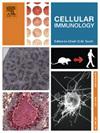Establishment of a multi-parameter flow cytometry method to identify and characterize neutrophil extracellular traps
IF 2.9
4区 医学
Q2 CELL BIOLOGY
引用次数: 0
Abstract
Neutrophil extracellular traps (NETs) are web-like decondensed DNA filaments released by activated neutrophils, decorated with antimicrobial proteins such as myeloperoxidase (MPO) and elastase. Although several methods exist to evaluate NETs formation, including fluorescent microscopy or scanning electron microscopy (SEM), and flow cytometry, each has inherent limitations that restrict widespread application. Given the increasing relevance of NETs in various pathophysiological contexts, we sought to develop a simple, specific, objective and cost-effective flow cytometry-based method to assess NETs both in vitro and in vivo. Our approach leverages multi-parametric flow cytometry to simultaneously evaluate cell size, granularity, DNA decondensation, histone citrullination, and intracellular MPO. This method enables reliable detection of NETs in purified neutrophils as well as in tissue samples. Its performance was validated in parallel with conventional microscopy, confirming specificity and reproducibility. Notably, this FACS-based method is faster, more economical, and free from observer-bias, making it especially well-suited for both research and clinical sample analysis.
建立一种多参数流式细胞术方法来鉴定和表征中性粒细胞胞外陷阱
中性粒细胞胞外陷阱(NETs)是由活化的中性粒细胞释放的网状去致密DNA丝,表面装饰有抗菌蛋白,如髓过氧化物酶(MPO)和弹性酶。虽然存在几种评估神经网络形成的方法,包括荧光显微镜或扫描电子显微镜(SEM)和流式细胞术,但每种方法都有其固有的局限性,限制了其广泛应用。鉴于NETs在各种病理生理背景下的相关性越来越高,我们试图开发一种简单、具体、客观且具有成本效益的基于流式细胞术的方法来评估体外和体内NETs。我们的方法利用多参数流式细胞术同时评估细胞大小,粒度,DNA去浓缩,组蛋白瓜氨酸化和细胞内MPO。该方法能够可靠地检测纯化中性粒细胞和组织样品中的NETs。其性能与常规显微镜平行验证,确认特异性和重复性。值得注意的是,这种基于facs的方法更快,更经济,并且没有观察者偏见,使其特别适合研究和临床样本分析。
本文章由计算机程序翻译,如有差异,请以英文原文为准。
求助全文
约1分钟内获得全文
求助全文
来源期刊

Cellular immunology
生物-免疫学
CiteScore
8.20
自引率
2.30%
发文量
102
审稿时长
30 days
期刊介绍:
Cellular Immunology publishes original investigations concerned with the immunological activities of cells in experimental or clinical situations. The scope of the journal encompasses the broad area of in vitro and in vivo studies of cellular immune responses. Purely clinical descriptive studies are not considered.
Research Areas include:
• Antigen receptor sites
• Autoimmunity
• Delayed-type hypersensitivity or cellular immunity
• Immunologic deficiency states and their reconstitution
• Immunologic surveillance and tumor immunity
• Immunomodulation
• Immunotherapy
• Lymphokines and cytokines
• Nonantibody immunity
• Parasite immunology
• Resistance to intracellular microbial and viral infection
• Thymus and lymphocyte immunobiology
• Transplantation immunology
• Tumor immunity.
 求助内容:
求助内容: 应助结果提醒方式:
应助结果提醒方式:


